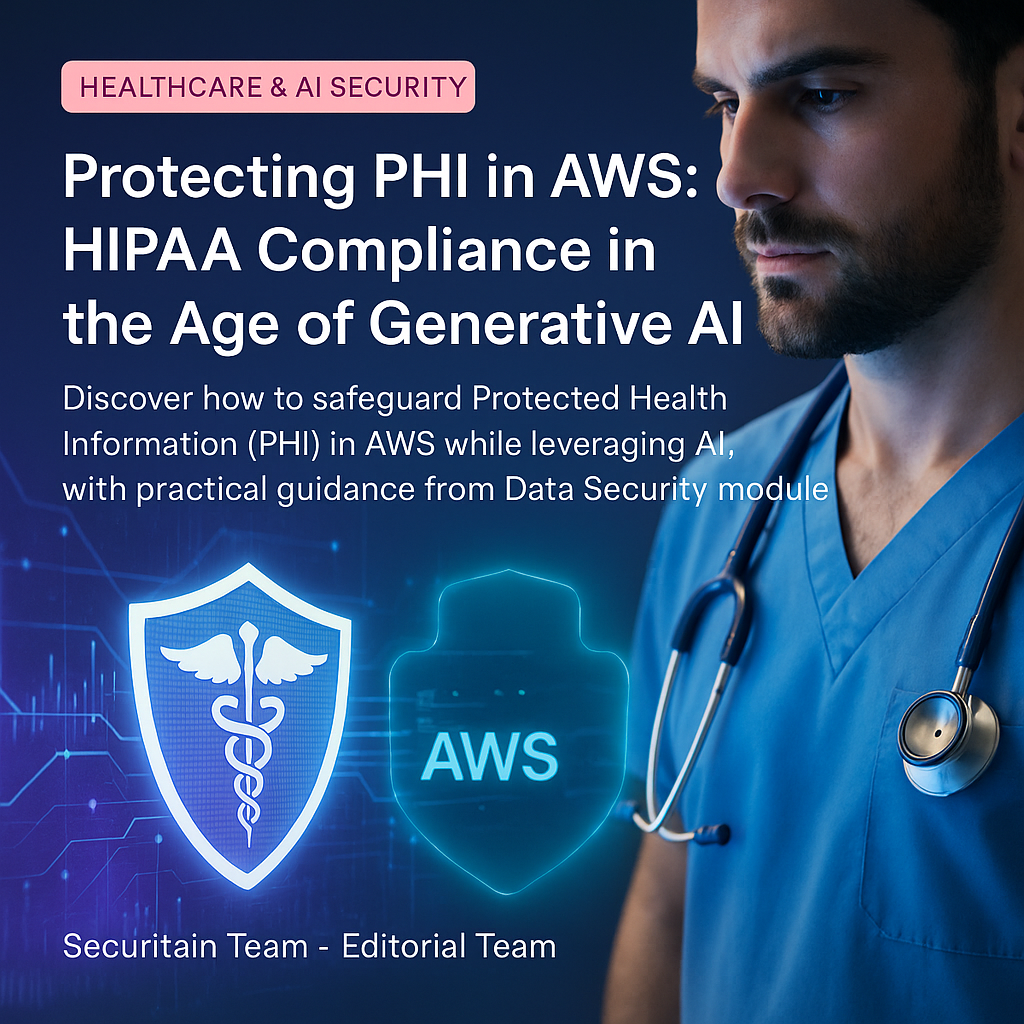Introduction
Generative AI brings new possibilities to healthcare — from diagnostic support to patient communication. But for HIPAA-covered entities, AI also raises a new set of compliance questions:
"How do you protect PHI when using machine learning models?"
This article outlines best practices for securing PHI in AWS, with real-world applications and automation via Securitain.
Understanding PHI in AWS
Protected Health Information (PHI) includes any patient-related data tied to identity — names, dates, treatments, or payment details.
AWS Services That Can Store or Process PHI:
These services can store or process PHI, but only when configured securely according to HIPAA requirements.
Key AWS Controls for PHI Protection
Encryption
Use AWS KMS for encryption at rest and enforce TLS 1.2+ for all data transfers. Enable S3 default encryption and RDS encryption.
Access Control
Apply IAM least privilege principles. Use CloudTrail to monitor all access to PHI resources. Enable MFA for privileged users.
Data Residency
Use region-specific data boundaries to comply with data localization requirements. Document where PHI is stored and processed.
Logging & Monitoring
Retain CloudTrail, VPC Flow Logs, and application logs per HIPAA retention requirements (typically 6 years).
AI and PHI Risks
Generative AI introduces unique challenges for PHI protection:
Prompt Leakage
Sensitive patient data inadvertently shared with AI tools or third-party APIs
Mitigation: Use private AI environments like Amazon Bedrock with VPC isolation
Data Mixing
Model training on non-segregated datasets containing PHI
Mitigation: Implement data classification and segregation at the storage layer
Unauthorized Inference
AI responses revealing sensitive information about patients
Mitigation: Apply output filtering and PII detection using Amazon Macie
Best Practice:
Mitigate these risks using private AI environments with strict network isolation, encryption, and access policies. Never send PHI to public AI APIs.
How Securitain Helps
Securitain's Data Security Full module provides comprehensive PHI protection:
PHI Discovery
Detects unencrypted PHI storage in AWS S3, RDS, and other services
Access Monitoring
Monitors IAM access patterns and flags anomalous behavior
Automatic Mapping
Maps violations to HIPAA safeguards automatically
Evidence Generation
Generates attestation-ready compliance reports for auditors
Real-Time Alerts
Notifies security teams of policy violations immediately
Remediation Guidance
Provides code-level fixes for security misconfigurations
Mapping to HIPAA Safeguards
| HIPAA Safeguard | AWS Control |
|---|---|
| §164.312(a)(2)(iv) | AWS KMS encryption |
| §164.308(a)(3) | IAM policies & MFA |
| §164.312(b) | CloudTrail logging |
| §164.308(a)(1) | AWS Config rules |
Conclusion
AI doesn't weaken compliance — it can strengthen it when used responsibly. The key is implementing proper safeguards and continuous monitoring.
Protect PHI and power innovation safely with Securitain's AWS-integrated compliance automation.
Secure Your PHI with Securitain


